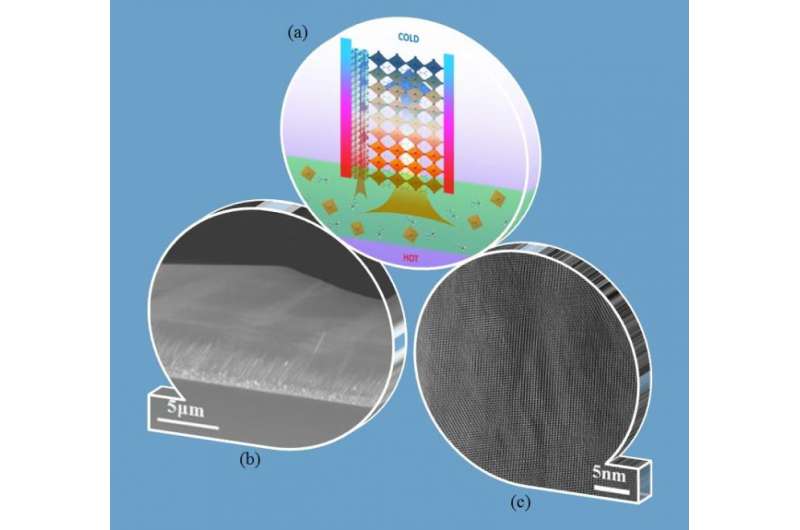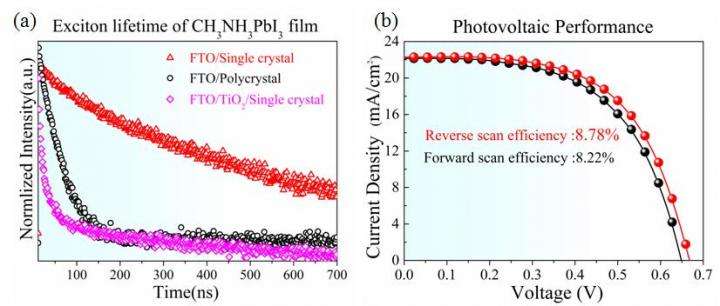Researchers create single-crystal perovskite solar cells

Photovoltaic conversion is regarded as the ultimate solution to the growing demand for energy, yet traditional silicon-based solar cells are expensive to produce, and production itself involves intensive energy consumption. Emerging hybrid organic-inorganic solar cells based on perovskite CH3NH3PbI3, on the other hand, are not only inexpensive to process but also flexible, and thus are widely pursued as one of the most promising next-generation photovoltaic conversion technologies.
Since first reported in 2009, the photovoltaic conversion efficiency of perovskite solar cells has increased spectacularly from 3.81 percent to 22.1 percent in just seven years, and this unprecedented rise has fueled worldwide pursuit for new efficiency records. Nevertheless, in the last two years, the pace of perovskite solar cell efficiency gains has slowed considerably despite the distance from the projected theoretical limit of 31 percent. Therefore, researchers are exploring new strategies to further enhance perovskite solar cell performance.
The current perovskite solar cells are based on polycrystalline CH3NH3PbI3 films, and thus inevitably have many defects in grains and grain boundaries that affect the device performance. Researchers have made efforts to produce bulk CH3NH3PbI3 crystals that exhibit exceptional photovoltaic properties such as long diffusion length and lifetime of photogenerated charge carriers, though the integration of bulk crystal into the perovskite solar cell architecture has proved challenging.
Now, a team of Chinese and U.S. scientists led by Profs. Jiangyu Li and Jinjin Zhao has successfully grown single-crystalline CH3NH3PbI3 film directly on electron-collecting FTO/TiO2 substrate, as shown in Fig. 1. They took advantage of temperature gradient and the capillary effect during the growth process, enabling them to produce high-quality single crystalline film tightly integrated on FTO/TiO2. This proves critical, as FTO/TiO2 is the most widely used electron-collecting substrate for perovskite solar cells, making subsequent device fabrication straightforward.
Indeed, the single crystalline CH3NH3PbI3 film shows excellent photovoltaic properties. Measured directly on an FTO glass substrate with poor electron extraction, the time-resolved photoluminescence has much longer carrier lifetime in single crystalline CH3NH3PbI3 film compared to polycrystalline film, as seen in Fig. 2(a). When a TiO2 electron-collecting layer is added to the FTO glass, then the charge carrier lifetime drops substantially, thanks to efficient electron extraction at the TiO2/perovskite interface. As a result, the device exhibits photovoltaic conversion efficiency of 8.78 percent, the highest reported to date for a single crystalline perovskite solar cells. The team says that the system has much room for improvement, and with continuous optimization of materials and devices, they believe that the single crystalline perovskite solar cells will rival their polycrystalline counterparts in the foreseeable future.

More information: Jinjin Zhao et al. Single crystalline CH3NH3PbI3 self-grown on FTO/TiO 2 substrate for high efficiency perovskite solar cells, Science Bulletin (2017). DOI: 10.1016/j.scib.2017.08.022
Provided by Science China Press





















